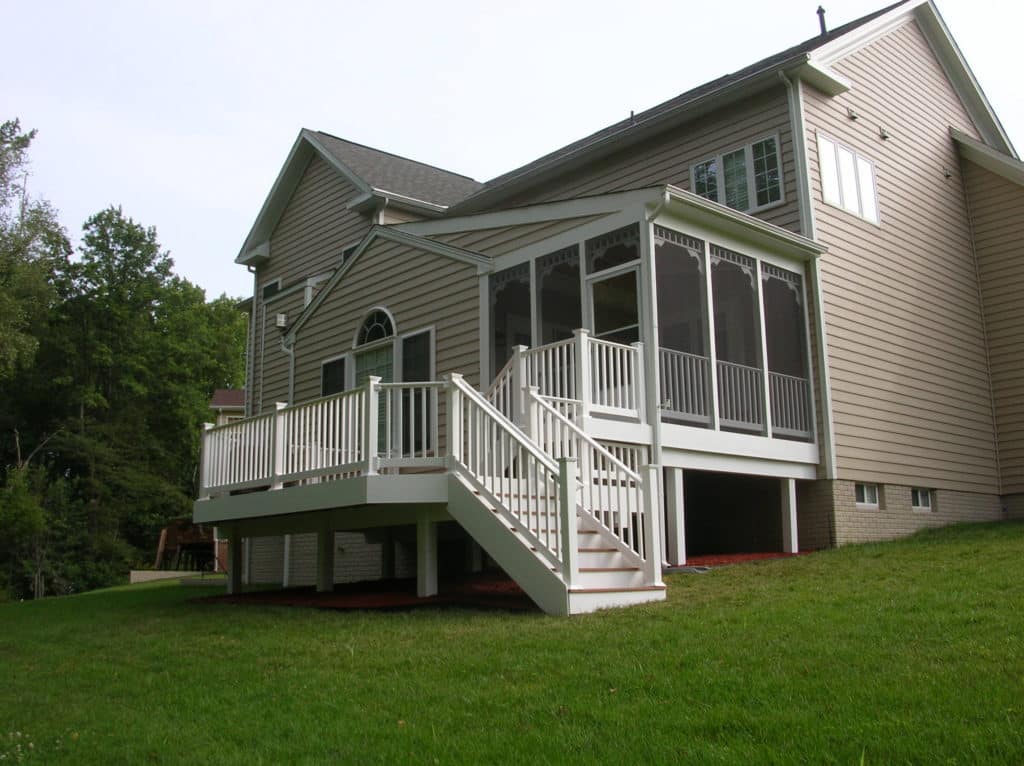When you are building a deck, safety should be one of your key concerns. That’s one of the reasons you should hire an experienced Maryland deck contractor to do the job. DIY deck is definitely not a good idea if you’ve never built a deck before or watched someone do it. However, an inexperienced or shady contractor can do just as much harm. If you inherited a deck from a previous homeowner, or if you are suspecting that your contractor is cutting corners or didn’t apply for permits, watch out for these mistakes that could jeopardize the safety of your deck.
Not Adding the Footings
Footings are typically poured with concrete underneath each of the deck posts to hold your deck up. The posts are then attached to the concrete footings with anchored galvanized shoes. All deck posts should have footings that extend below the frost line. In Baltimore County, for example, the regulated footing depth is 30 inches below the finished grade. Without the footings or with footings that are too shallow, the ground water may end up pushing the deck up or sideways. And the posts that are simply buried in the ground may rot and eventually fail.
Using Wrong Hardware
No matter how many nails you put in, they won’t hold as well as screws and bolts. Even screws loosen up over time and may need tightening. It’s important to use the right type of hardware for attaching parts of your deck to each other. And it not only matters which screw or bolt you use, but also what they are made of—stainless steel or hot-dipped hardware is usually the best.
For example, lag screws or through-bolts are typically used to attach the ledger board to the house. Carriage bolts are used to screw joists into the posts, as well as to attach deck railing posts to the deck frame. The number, spacing and placement of these fasteners is not something you can guess or estimate—most of these things are regulated in the building codes of your Maryland city or county. It’s especially important where you put bolts in the ledger board—you want them to grab onto something solid like house joists, and not foam sheathing or plywood.
Not Using Joist Hangers
This is more of a topic of not using specialized hardware available to deck builders. Joist hangers are essentially brackets for the joists to sit in. The hangers are attached to the ledger board and any horizontal beams to keep the joist straight and strong. Using nails or screws without the joist hangers may cause the joists to sag or become uneven over time.
Not Enough Joists
In attempt to cut costs and save money on materials, you or your contractor may decide to use fewer joists by spacing them out further apart. This is a big mistake because joist spacing is a heavily regulated subject. The recommended spacing is typically between 12 and 24 inches depending on the type of materials, the size of the joists and the anticipated dead and live load on the deck. The dead load are stationary items and the live load refers to people moving on the deck. Although this is not about a deck, the Versailles wedding hall collapse that killed 23 people and injured hundreds more was caused by poor load distribution. It is important to consider everything you plan to put on your deck and where it will go before even starting the construction process.
Shaky Railing
Railing should never be an afterthought of a deck construction project. Failed railing can cause your family member or guest to tumble down and seriously hurt themselves, depending on how high your deck is. Railings should never be attached with balusters alone—there have to be railing posts. It’s best when the railing posts are the same as support posts, but other safe arrangements can be made if this is not doable. Also, neither posts nor balusters should be attached by nails. Your deck railing is supposed to withstand a force of 200 lbs, yet with nails you could probably easily kick out a baluster with a slight tap of a shoe.
If you think your deck was built with one of these safety defects, or you simply want to make sure you hire a Maryland contractor who can do it right, contact North American Deck and Patio today!


